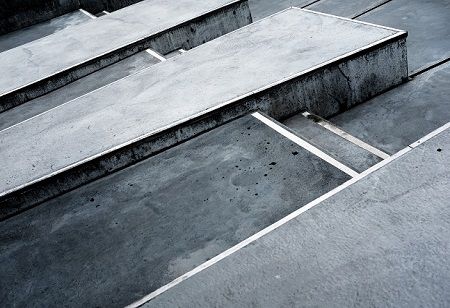
The global waterproofing systems market was valued at USD 65.89 billion in 2023 and is projected to reach USD 103.49 billion by 2032, growing at a cagr 5.2 percent during 2024-2032. According to novel materials research, focusing on flexibility, resilience, and longevity will ensure improved performance against water ingress. The waterproofing membranes market is witnessing a shift toward smart waterproofing solutions integrating IoT technologies.
The IOT-enabled waterproofing systems play a crucial role in the construction landscape by offering safety, durability and much more. In the present scenario, traditional waterproofing methodologies have become ineffective with the Internet of things, and the revolutionary impact of the advanced technology reflects a change toward smart waterproofing solutions.
Enhanced Monitoring and Maintenance
Most of the industries have stopped using ancient waterproofing methods as new technologies have taken place to safeguard buildings, whatever the structure. More importantly, the IOT-enabled waterproofing methods play a crucial role in protecting the surface in the event of any climatic conditions. It has the capability to closely monitor and give accurate insights. In the case of traditional ones, it always depended on the periodic examination and maintenance schedules, which led to potential issues and damages. With robust technology in place and IoT-enabled sensors, variations in temperature, accurate information on moisture levels, and mechanical strains can be examined and collected. Hence, this active approach enables quick detection of moisture leaks, and preventive measures can be taken.
For instance, Siemens is a leading automation firm that delivers building automation and management systems that integrate improved monitoring and maintenance capacities for waterproofing systems. By harnessing its building management system (BMS) solutions, Siemens can integrate control systems and sensors to closely observe several aspects of building activity.
Kishore K.V.K, CEO, Technokem said that "The waterproofing systems keep buildings and structures dry and protected from water damage, while the adhesives offer a strong and reliable bond for various construction materials"
Predictive Analytics and Risk Mitigation
In this modern era, advanced IOT technology plays a significant role in empowering waterproofing systems with predictive analytics abilities, transforming assessment-related risk and mitigation tactics. Most interestingly, with the use of old data and machine learning algorithms, IOT technology can forecast the main vulnerabilities and weak spots in waterproofing systems. Moreover, this has helped the potential stakeholders implement robust measures that will help in buffering weak spots, improving drainage systems and even sealing mechanisms, and finally reducing the risk of all sorts of water damage and structural faults. To keep everything in proper shape, organizations have integrated technology that aids in transforming waterproofing systems into preventive custodians against damage, making sure of enduring structural resilience.
IBM's Watson IoT platform is used in the construction sector and can be implemented for predictive analytics and risk mitigation in waterproofing systems. By integrating the sensor into IOT, the firm can obtain crucial data on conditions related to the environment, moisture and temperature variations that affect waterproofing.
Remote Monitoring and Control
Identifying any potential faults of waterproofing systems in advance will make the organizations easier to look into it and sort at the appropriate time. The advanced IOT technology has remote monitoring and control, which will help track anything going wrong. With the help of a centralized IOT platform, investors can get the actual data and information irrespective of location, helping to decide at the right time so that a suitable solution can be taken to fix the issue. Most importantly, in any contingencies, remote monitoring will deliver a quicker response, ensuring the reliability of waterproofing systems, although the situations are challenging. Hence, it is significant to implement this technology to protect from unfavourable future events.
Tesla has introduced remote monitoring and control features for its Powerwall products. This allows users to keep an eye on the real-time energy usage and status of their batteries through a mobile application. Remote monitoring assists users in managing comprehensive tracking of usage patterns and regulating their Powerwall products' energy consumption.
Energy Efficiency and Sustainability
With IOT-enabled technology, organizations gain several benefits: saving energy efficiently and achieving sustainability. At the same time, it will lead to innovations with advanced waterproofing systems by improving resource usage and making them last longer. Most interestingly, the sensors involved in IOT can observe environmental conditions, allowing adjustments in waterproofing equipment and techniques. Moreover, Smart systems play a vital role in reducing energy usage by controlling cooling and heating and minimizing waste and carbon emissions. An environment-friendly solution can be achieved by adhering to sustainable activities and materials. Hence, integrating IOT technology will benefit organizations in the long term and even for mankind and the world.
For example, BASF has an innovative solution for waterproofing systems centered on improving energy efficiency and sustainability; their main product is the Elastospray, a foam insulation framework that provides great waterproofing properties while enhancing energy efficiency in buildings.
All in all, IOT technology has become the key to transforming waterproofing systems by providing several advantages in monitoring the building, maintaining it, and risk mitigation. It's high time that all industries associated with building harness advanced IOT technology to protect themselves from uncertain dangers. To make it more effective, industries have to utilize remote control features, predictive analytics, and critical data so that IOT can help them get rid of potential issues and improve the resilience of their structures against several threats. As technology continues to advance, the future of IoT-driven waterproofing will open the way for sustainability and safety.
We use cookies to ensure you get the best experience on our website. Read more...